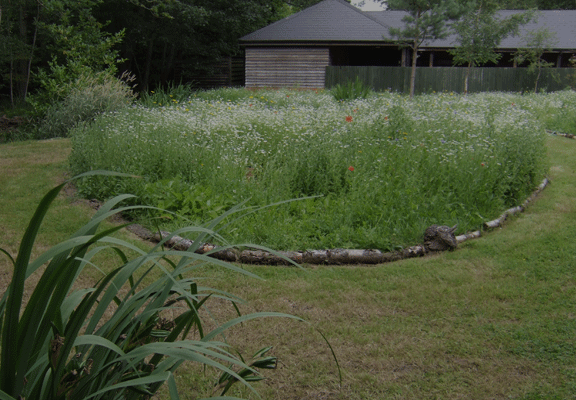.JPG)
Wildlife Ponds
Berkshire Landscapes are passionate about creating and protecting habitats to maintain the biodiversity of our native flora and fauna. We will always provide detailed advice on aftercare.
Depending on the creatures in your locality, a professionally designed wildlife pond will attract all sorts of wildlife. With careful planning a wildlife habitat should accommodate a sheltered, well planted, informal pond surrounded by dense, vigorously growing, moisture-loving plants which will make it a magnet for wildlife from a wide surrounding area.
In order to attract the maximum diversity of creatures, it is most important to locate the feature in an area providing ample cover nearby. This will allow animals to approach the pond in safety, including birds, insects, frogs, newts, bats, small mammals such as water voles and field mice.
Careful planting is fundamental
Plants should be chosen that will sustain the ponds ecosystem, providing cover and food. Native plants and flowers are more attractive to indigenous wildlife. In a successful wildlife pond and habitat, all plants and creatures play their part in the complex food chains. We steer away from using non-native planting or recommend stocking the pond with ornamental fish as their body waste creates a build-up of toxins that will upset the balance of the pond.
Still water is perfect with no use of artificial filtration.
All the filtration requirements are naturally achieved through the planting scheme, so long as the correct type and quantities of plants are used. When we discuss your requirements on site, we'll go carefully through every aspect of the design and construction with you, to ensure that your pond fully meets your needs and expectations. And of course, we'll do our best to stretch your budget as far as possible so that you can have a natural pond to be proud of!
.JPG)
Planting
We have extensive knowledge of aquatic plants and can recommend suitable plants for spring, early and late summer flowering. We can supply, deliver and position them in the pond for you. When constructing a wildlife pond, planting is of the utmost importance as this is what will naturally filter the water and provide a safe, clean habitat for wildlife visiting, breeding and living in your pond.
Key Factors to Consider
There are many factors that need to be
taken into account when designing your wildlife habitat and pond. These include
the geographical location of the property, the position in the garden, the
amount of exposure to sunshine and shade, and so on. A member of our team will
fully discuss your options with you.
EPDM Rubber Liners & Pre-form Shells
We are trained installers of high quality EPDM rubber liners, laid on a soft sand base covered with pond underlay. Lining a pond allows a more freeform shape to be achieved although pre-formed shells are also suitable for wildlife ponds.
Edging
There are certain types of edging that suit a wildlife pond. These are natural rock edging, cobble beaches, gravel and grass edgings. Flagstone or slab edgings are not suitable as when laid they create an overhang which will prevent amphibians or reptiles from exiting the pond water. A hedgehog or mouse will also not be able to exit the pond if one fell in. Careful consideration must be used when choosing the material to edge a wildlife pond.


